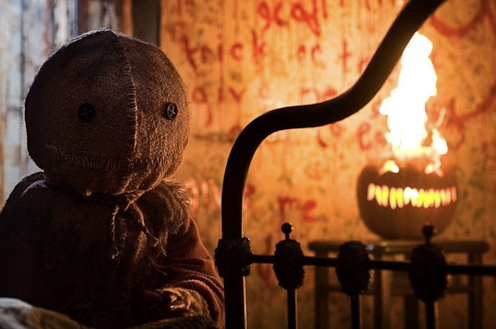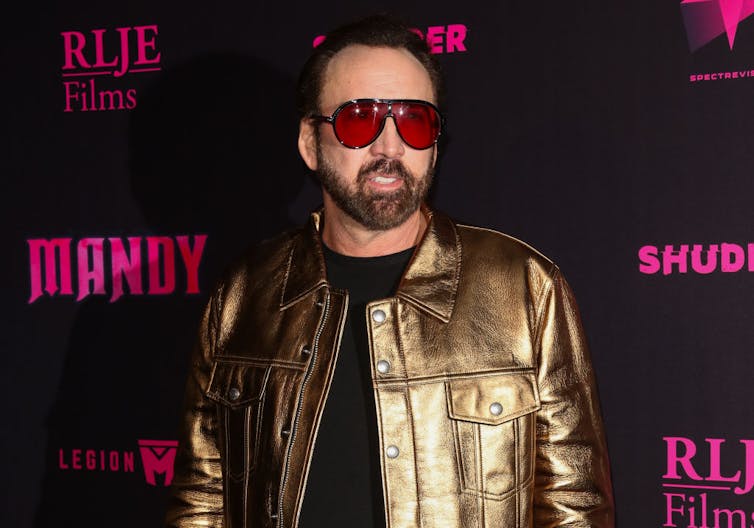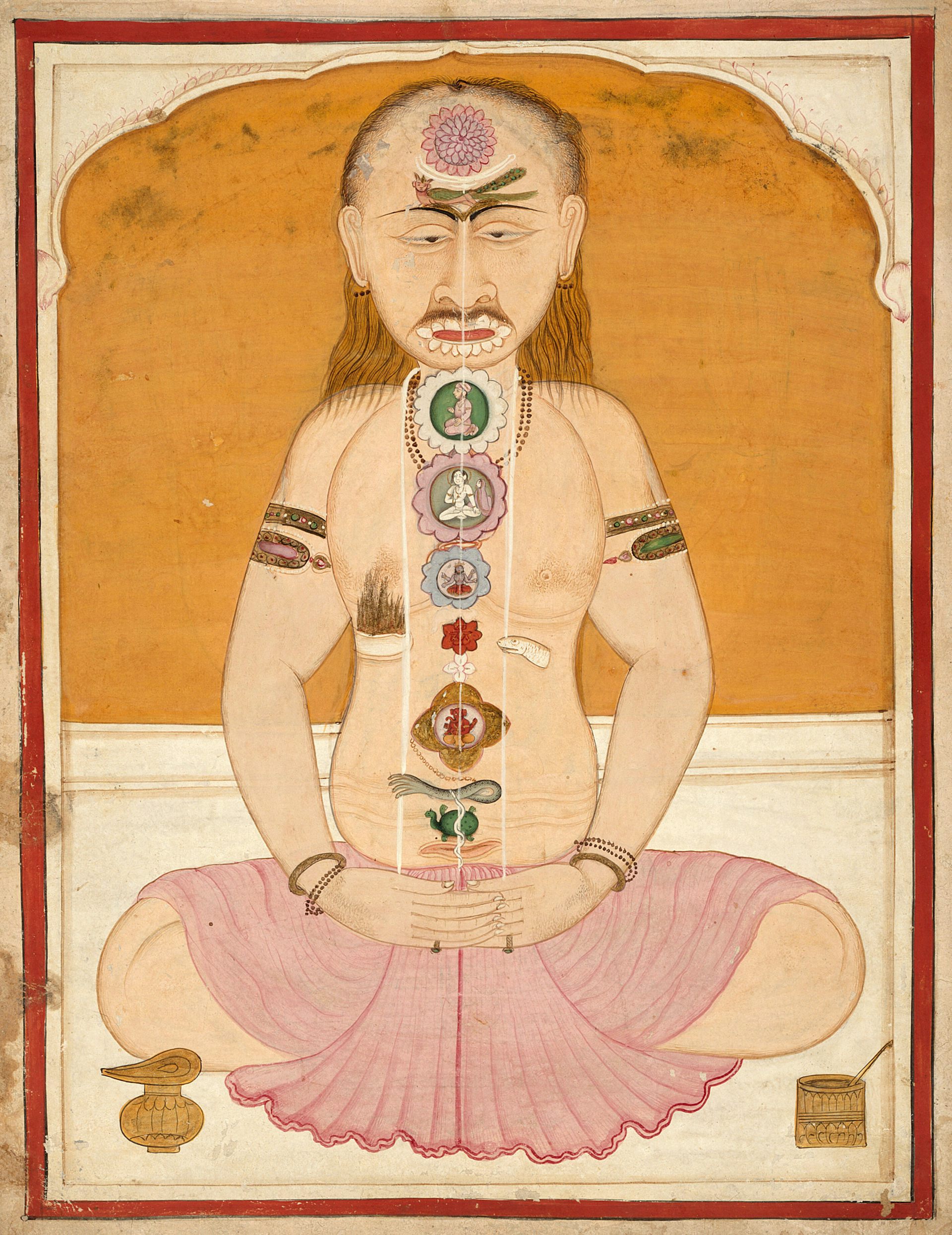The best horror movie you’ve never seen
Warner Bros. assumed ‘Trick ‛r Treat’ would be such a bust that the studio released it straight to DVD in 2009. Here’s how it became a holiday classic.

It’s scary movie season, a time when many people watch films about zombies, serial killers, werewolves, magic and mysterious monsters who are impossible to kill.
However, as far as I know, there’s only one film that features all of those elements – and you’ve probably never seen it.
Made in 2007, “Trick ‛r Treat” consists of four interconnected horror stories, each about 15 to 20 minutes long, that all take place on a single Halloween night.
While characters from one story sometimes appear in other segments, the unifying force in the film is Sam, a mysterious creature wearing a burlap mask. He takes umbrage whenever a character disrespects a Halloween tradition, whether it’s by scaring away trick-or-treaters or blowing out a jack-o’-lantern before Halloween is over. Each meets a gruesome end.
Horror buffs eventually discovered the film. Today, it’s hailed as a modern classic.
What went wrong?
“Trick ‛r Treat” was produced by a major studio, Warner Bros. It featured A-list stars, such as Brian Cox and Oscar-winner Anna Paquin. It was produced by Bryan Singer, who was known for churning out hits such as “X-Men” and “The Usual Suspects.” And though its director, Mike Dougherty, was making his directorial debut, he had worked as a screenwriter on films such as “X2: X-Men United” and “Superman Returns.”
Despite all of these credentials, the film’s theatrical release was delayed from fall 2007 to 2008. Then a theater run was canceled altogether, with Warner Bros. finally releasing it on video in 2009.
The studio never gave an official reason for pulling the theatrical release; however, some critics have speculated that the box office success of the “Saw” franchise and Rob Zombie’s “Halloween” remake were factors.
Other reports suggest that the film’s anthology format, its mixture of horror and comedy, and a plot featuring murdered children made it too hard a sell.
Given the cost of marketing and promoting “Trick ‛r Treat” to a nationwide audience, perhaps the risk wasn’t worth it for a film with a relatively small US$5 million budget. Dougherty himself said these hang-ups constituted a “perfect storm”, suggesting that no one development sealed the film’s fate.

Bypassing the box office
As recently as a decade ago, films released directly to DVD were viewed as flops or cash grabs. In fact, there’s an entire subgenre called “mockbusters” – low-budget rip-offs of studio films, such as “Transmorphers,” which tried to piggyback the success of the “Transformers” franchise, and “Atlantic Rim,” which attempted to do the same for the 2013 blockbuster “Pacific Rim.”
Then there are direct-to-video sequels meant to capitalize off hits. Disney made a lot of money in the late 1990s and early 2000s producing widely panned, direct-to-video animated features such as “The Return of Jafar” and “Pocahontas II: Journey to a New World.”
But second lives for films that were initially snubbed or ignored are nothing new.
“The Boondock Saints” was briefly screened in a handful of theaters for a single week in 1999 before being dumped into the video market. Only then did viewers find it, and it became a cult favorite that eventually begat a sequel.
The stigma of direct-to-video release has diminished over the past decade thanks to the rise of streaming, in which content made directly for home viewing can receive critical acclaim and attract subscribers.
Actor Nicolas Cage has made a cottage industry of this format. While some have attributed his massive output in the past decade to his financial difficulties, Cage’s films “Joe” (2013), “Mandy” (2018) and “Pig” (2021) have all received critical acclaim, despite sometimes only running in a handful of theaters for a week before their release into streaming markets and video on demand.
It’s this sort of tradition that led to the rediscovery of “Trick ‛r Treat.”

Hipster horror
The appeal of “Trick ‛r Treat” is rooted in its subversion of horror tropes.
For example, women and children, who’ve historically served as victims in the genre, have a lot more agency in Dougherty’s Halloween tale. In fact, the mysterious Sam was played by Quinn Lord, who was only 8 years old when the film was shot. In the film, the character’s origin, age and gender remain undefined since Sam is masked or covered in prosthetics for the entire film, blurring the line between human and monster.
In addition, the film’s complex structure, which some speculated might have hurt its chances for commercial success, helped fuel the film’s critical praise. Dougherty called it “‘Pulp Fiction’ meets ‘Halloween,’” a nod to the interlocking structure of Quentin Tarantino’s breakout film and the setting of John Carpenter’s horror staple, which also unfolds over one Halloween night.
It has become somewhat of a cliché to say that esteemed art, initially overlooked, was “ahead of its time.”
Still, it would be fair to say that “Trick ‘r Treat” arrived on the cusp of what has been called a “horror renaissance” in the past 15 years. Directors like Jordan Peele, Ari Aster, Robert Eggers and Mike Flanagan have found critical and commercial success by branding themselves as horror auteurs.
In addition, Peele and directors like Nia Dacosta, who helmed 2021’s “Candyman,” have opened up a brand of horror that deals with social issues and identity. Dougherty’s film also anticipated a trend of horror films with a darkly humorous streak, including Peele’s “Get Out” and David Gordon Green’s reimagined “Halloween” sequels.
Despite the film’s rocky beginnings, “Trick ‛r Treat” received a belated theatrical release in 2022, which has spurred talk of a potential sequel.
Dougherty even acknowledges that the film may owe its current popularity to its botched release. While some mainstream films disappear quickly, “Trick ‛r Treat” – currently streaming on Max – reappears every Halloween. Just like Sam.
Scott Malia does not work for, consult, own shares in or receive funding from any company or organization that would benefit from this article, and has disclosed no relevant affiliations beyond their academic appointment.
Read These Next
Outside the West, the Kundalini tradition presents a model of the ‘divine feminine’ beyond binary ge
Drawn from tantric traditions, Kundalini points to spiritual practices that go beyond traditionally…
Merry Jewish Christmas: How Chinese food and the movies became a time-honored tradition for American
What do you do on Dec. 25 if you don’t celebrate Christmas? For Jewish Americans, the answers range…
Netflix-Warner deal would drive streaming market further down the road of ‘Big 3’ domination
US industries have traditionally consolidated into 3 to 5 main players. When it comes to streaming,…





